Many folks, particularly homesteaders run across the issue of moisture. They need a way to keep electronics, clothing, leather goods, and food supplies dry.
Moisture can cause mold, rust, and bacteria, leading to severe losses when you’re dependent on stockpiled food supplies, or are relying on a piece of electronic equipment like a radio to keep you updated with what is happening, for example.
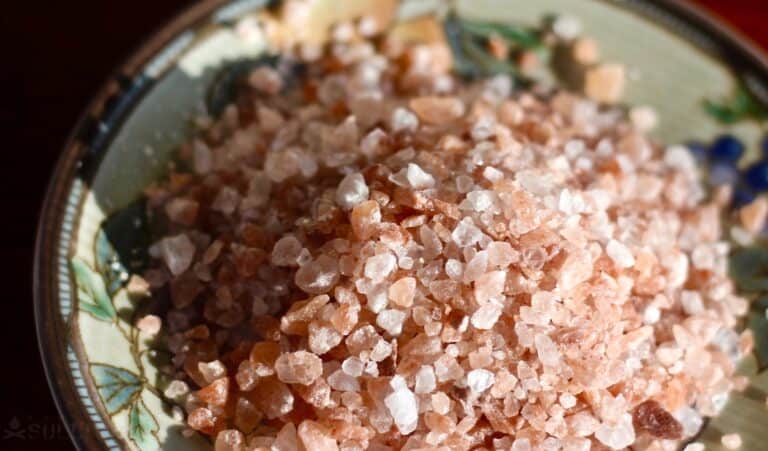
Desiccants usually work through adsorption, the difference between adsorption versus absorption being quite important.
When one material sticks to the surface of another it’s called adsorption – like water sticks to the surface of the silica gel granules. However when one substance is absorbed by another, the two combine chemically – in other words, the one is taken into the other internally.
That’s why when silica gel adsorbs water molecules they stick on the outside and you can reuse the silica gel by heating it in an oven to dry out the moisture. But if using cement as a desiccant, once the cement is hardened it can’t be dried out and reused.
Making your own Desiccant Packs
Desiccant packs can be purchased, and will do a very good job of keeping various things dry, but who wants to spend all that money?
To put it in perspective, buying one lb. of desiccant packets normally costs about $15 plus shipping. These commercial packets are made of silica gel granules so one might think that buying the granules separately would save some money:
Even if you buy your desiccant and packets separately online and fill them yourself, you will spend over $10. It can get costly over a long period of time when purchasing several dozen lbs. of desiccant to cover all your needs, so we have outlined a way to create your own packs.
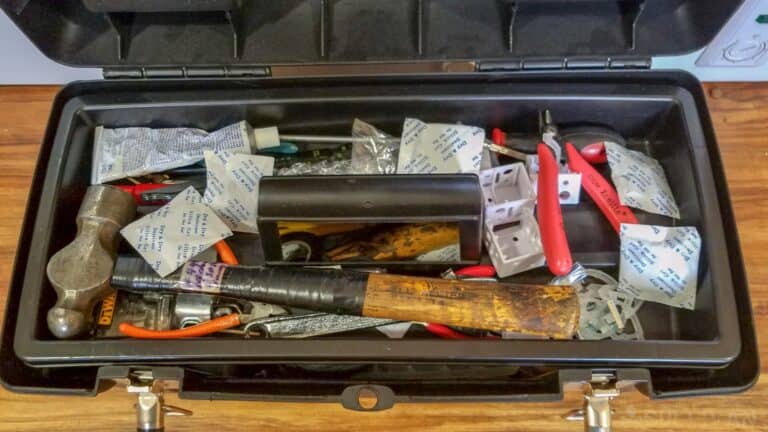
DIY Silica Gel Alternative Packs
There are several ways to save money with this project. One is to buy silica gel locally and package it in appropriate sizes. You can typically buy one lb. of gel for around $5 locally. Hobby Lobby, or your local Florist are good places to start.
You can get a 5 lb. package under the name Dri-Splendor for around $15 at Hobby Lobby. Check around the dried flower section of stores to find larger quantities of this desiccant as it is often used to dry flowers quickly so they don’t lose their color.
To repackage the silica gel, use the filter cotton drawstring packs commonly used to make DIY tea packets. These can normally be found at specialist tea shops, health food stores, or online.
The process with the ready-made drawstring bags is simple – fill, tighten and use where you need to keep mold away from handbags, belts, food, medicines, etc. However, these roughly 2” x 2” bags may not suit and you might need larger ones.
To make your own bags use a clean old cotton sheet or other thin cotton fabric cut into pieces the size you want your bags to be – either 6” x 6” or 4”x 4”.
For a 6-inch square bag cut 13 inches in length and 6 inches wide, this allows for a ½ inch foldover at the top to close the bag.
Use a sewing machine to hem closed two sides, fill with silica gel, and then either close by sewing the top shut by machine or by hand.
If hand sewing is not your thing or you don’t have a sewing machine then heat-sensitive cloth adhesive can be bought at hobby shops. It can either come in a tape or a liquid and can be applied to the edges of larger pieces of cloth to seal them together.
Another option for desiccant packs is to use glass or plastic bottles. This works especially well using silica gel as it stays granulated even when absorbing moisture whereas other products clump up. Simply fill the bottle with your product and poke holes in the lid to let air flow in and out.
On a side note, if you collect the desiccant packs you get with products you purchase you can reuse them. Just heat in a 250F oven for 45 minutes.
Many silica gel products have indicator crystals that turn pink when saturated and are blue when dry. This is how you can tell when you need to dry them out before reuse.
Now we tend to think of silica gel as the go-to desiccant but there are a whole lot of other options out there.
Other Substances Used As Desiccants
1. Salt
Salt is fairly inexpensive and can be used as a desiccant, as it works especially well with food products. The only downside is that the salt will clump together when it absorbs moisture, but to get around this you can add calcium silicate – the anti-caking agent added to foods Then just package it as described above.
2. Dry Rice
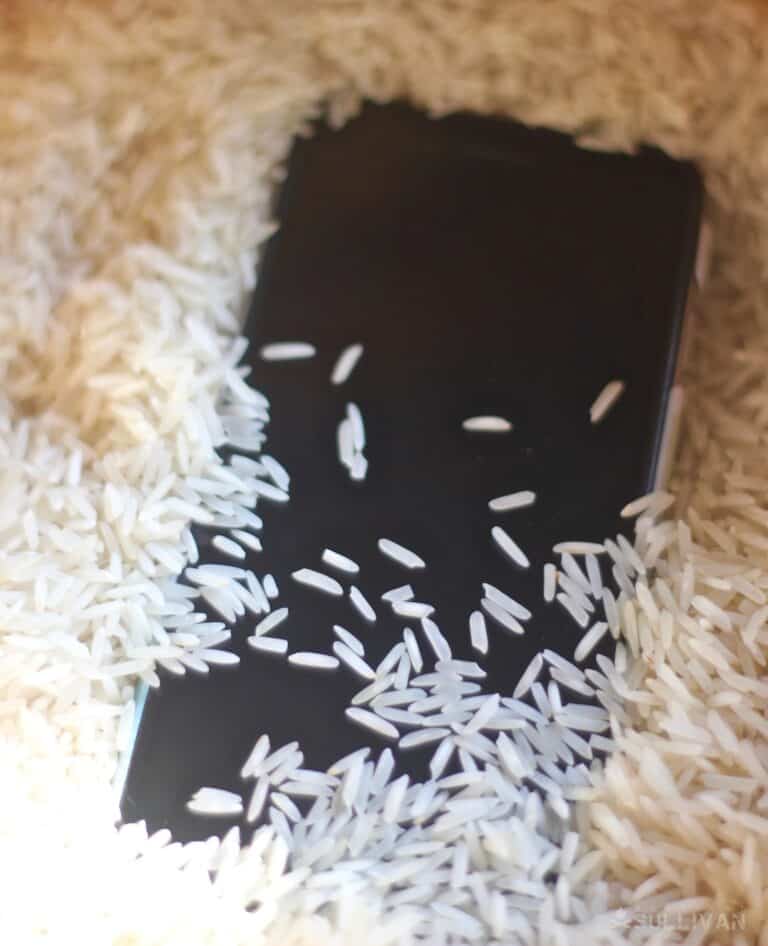
Dry rice can be used as a desiccant. You may have heard that putting a water-logged cell phone in rice can bring it back to life. I have seen this work firsthand.
You can package dry rice in small cloth bags as described earlier to keep your supplies dry. You can also use large packs of rice to retain heat for hot packs. If you warm a rice pack you can put it on achy muscles or cold hands and it will stay warm for hours.
3. Dry Cement and Plaster of Paris
Dry cement and Plaster of Paris (gypsum) are desiccants. They will turn into a solid block as they absorb moisture, but they can be used if no other options are available.
4. Non-dairy Creamer
Non-dairy creamer can be used as a desiccant. It needs to be transferred to more breathable packets, but it will turn hard as moisture is absorbed. Believe it or not, this was the number three product for absorbing moisture just behind calcium chloride and silica gel.
5. Calcium Chloride
Calcium chloride can adsorb many times its own weight in water, and is often used to melt ice and adsorb road moisture during the winter. It can be packaged and used to keep containers dry.
However, after several months of absorbing moisture, it may get a little messy, so you may not want to use it unless you’re ready to change out your packs periodically. If you chose this product, leave some extra space in the pack as it will expand by up to 50%.
6. Old Wallboard or Plasterboard
Old wallboard or plasterboard can be used as a desiccant if you find yourself in an older building. When Cresson Kearny designed a fallout meter for radiation, he specified that a desiccant was needed to keep the humidity in the room to a minimum.
However, modern wallboard and plasterboard are designed to avoid absorbing moisture. Therefore you would likely need to be using products from at least 50 years ago for it to work properly, so this probably isn’t a very practical alternative desiccant.
7. Diatomaceous Earth
Diatomaceous Earth (DE) is processed by grinding up a soft rock made up of fossilized diatoms, an ancient type of microalgae. It is ground to a powder and works as a natural desiccant, adsorbing moisture to keep a product dry.
DTE is composed mainly of silicon dioxide but also contains very small amounts of aluminum and iron oxide. You can keep cockroaches, silverfish, spiders, and even fleas under control by putting DE in crevices and areas they like to hide.
It is thought that the fine edges of the DE will cut their bodies causing them to dehydrate and later die and is best used in areas that are reasonably dry rather than in damp areas.
Using DTE, farmers and commercial growers as well as homesteaders can get rid of insects safely without having to use strong chemicals, simply by using its desiccant properties. It is important that the DTE you buy for the purposes of pest control should be marked “Food Grade”.
Do not use pool-grade DTE because the silicon dioxide will have been changed to crystalline silica through the heat treatment applied, meaning that it becomes abrasive when inhaled and can cause damage to the respiratory system and even lead to silicosis, a progressive lung disease.
DTE will adsorb 80% of its weight in water, but it does this more slowly than silica gel which can quickly adsorb 40% of its weight in water. This is why DTE is used in the shipping industry to keep freight dry in confined spaces on long sea voyages and may be best for keeping your stockpiles of food and other goods dry for long periods of time.
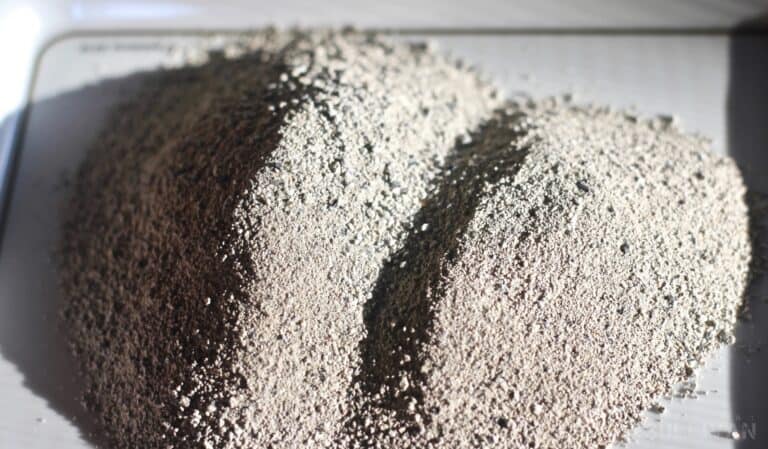
8. Bentonite Clay
This clay adsorbs water preventing corrosion and mold. Bentonite clay – also used in kitty litter – is used to keep moisture under control in electronic goods, food, pharmaceuticals, military equipment, ammunition, and guns, machinery and auto parts.
Harsh chemicals are not used in the production of Bentonite clay, a naturally occurring substance, therefore it is a good choice as it creates less impact on the environment.
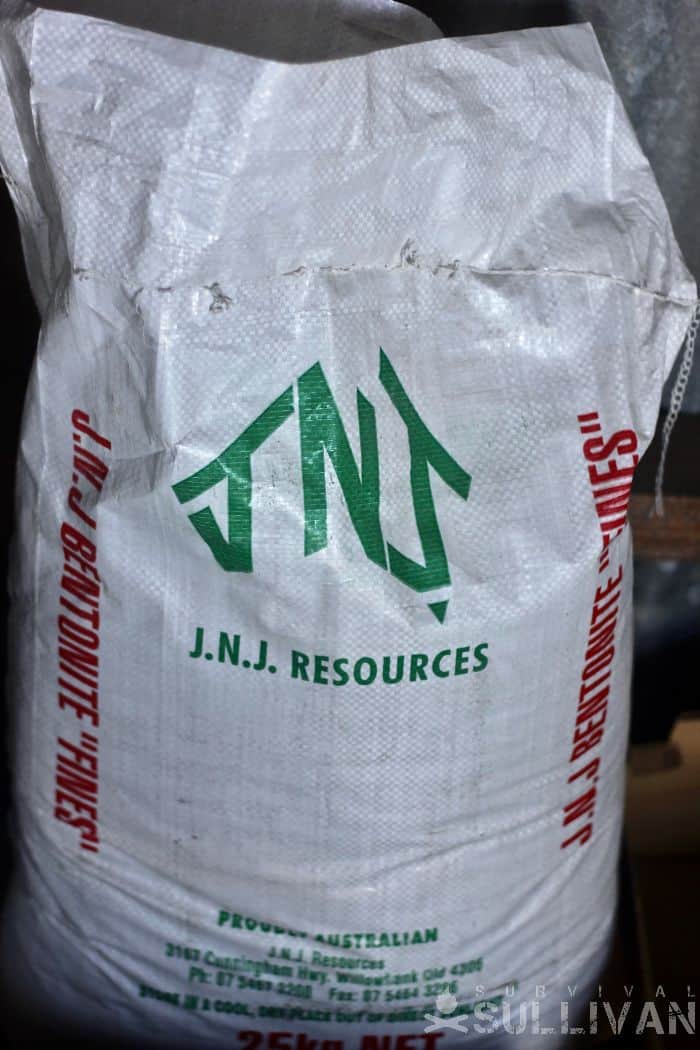
9. Montmorillonite Clay
Montmorillonite Clay is a natural clay found in the Montmorillon area of France, with a porous structure once it undergoes calcination which involves heating it to a high temperature.
This removes volatile substances in the clay and renders it more friable. After being calcinated, it can adsorb up to 25% of its weight in water, and can be dried out and used repeatedly at low temperatures without losing its ability to adsorb, however, if used at high temperatures, it can lose this adsorption ability.
This is a type of smectite clay, and similar to Bentonite clay – which comes from Benton in Wyoming.
It is used as a desiccant in the shipping industry where the cargo will not be subject to high temperatures but the Montmorillonite clay available online is used more as a digestive aid and internal detoxifier and its price would be prohibitive as a desiccant.
10. Synthetic Zeolites
The open crystalline lattice of zeolites – an aluminosilicate – permits water vapor molecules to be held inside the crystalline structure. The synthetic zeolites will adsorb 22% of their weight in water.
Synthetic zeolites are also known as molecular sieves because the varying size of the atoms in the aluminosilicate will determine the size of the openings between which the water molecules get trapped in the crystalline structure. This isn’t a homemade desiccant, but one you buy ready to use.
Made by Delta Adsorbents, Cargo DryPak this product comes in two sizes a 500g pack for use inside cartons and packages and a 1500g size for use inside a container – a 20ft container will need 10 units. Useful if you are storing foods in a corrugated iron shed or a container.
11. Calcium Oxide (CaO) Quicklime
If you have quicklime, aka calcium oxide, on hand it can be used as a desiccant. The only problem is that I it is corrosive and always needs to be in proper packaging to ensure it doesn’t leak. Even at quite high ambient temperatures, it will continue to adsorb water., it swells when adsorbs the moisture.
Usually used in agriculture, quicklime has corrosive qualities and needs to be correctly packaged for use as an adsorbent. The best way is to use a plastic or glass bottle with holes poked in the lid.
Desiccant Uses
Seed storage is an excellent way to use desiccant packs. Many preppers and survivalists have a seed catalog/collection either for annual planting or for SHTF planting. These seeds often will only last a year or two in humid conditions, but could last dozens of years if kept dry. Small desiccant packs are great for keeping these seeds in optimal condition.
Food storage is another good reason for desiccant packs. You probably have some jerky or canned goods stored somewhere. Maybe you have some oats, flour, or cornmeal. You may have some pasta, rice, or beans.
All of these foods have to stay cool and dry to prevent mold and bacteria. In your dry goods, you can put desiccant packs directly in the container. In addition, it is a good idea to put a few more in the pantry to improve the overall humidity.
Ammunition must be kept away from moisture to avoid rusting and avoid the powder from going bad. Many people will store ammo in cans or mason jars with desiccant packs and then bury them or hide them on their property.
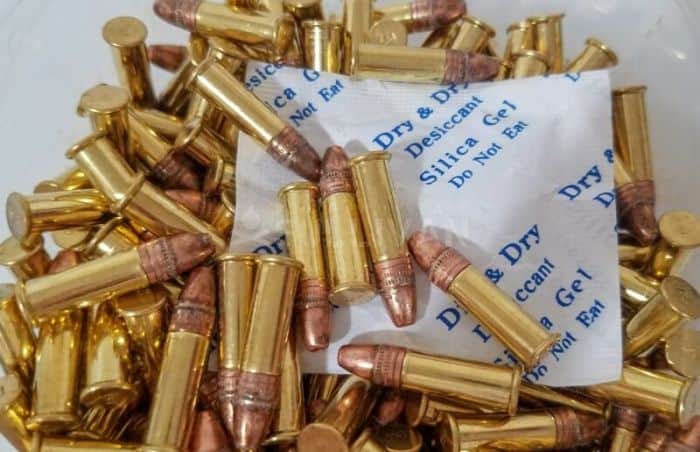
With this ammunition being used to shoot food for your family and keep them safe, you want to know that every round will fire.
Fire-starting materials must be kept bone dry for them to be effective when you need them. Matches, lighters, fuses, and tinder materials are of utmost importance.
Even a little moisture can keep your fire from igniting. With a desiccant pack and a water-tight container you can always have a roaring fire.
Electronics often have to be kept very dry to stay functional and avoid corrosion. In a survival situation, your communication devices are some of these essential items. Any radios, cell phones, or GPS devices should be stored with desiccant packs to keep them working.
Clothing also must stay dry in survival situations especially your shoes, socks, and underwear. These clothing items are prone to moisture and can easily form mold and bacteria.
In a survival situation, these contaminants can lead to skin disorders that can make walking difficult. With a few desiccant packages, you can help cut down on the moisture where you store these items.
Tools are items that survivalists and preppers rely upon heavily. Rust can again deem these items worthless, but eliminating the moisture can ensure they last a lifetime. Drop a few desiccant packs in your toolbox to keep everything shiny and new.
Important documents must be stored in a dry place. In many SHTF situations, these documents are both essential and irreplaceable. You may have a safe place for these documents, but you also have to keep out the moisture. Place a desiccant pack inside and all should be well.
In summary, moisture is the primary agent of decay in any environment. Any of the above-suggested desiccants can be used to eliminate moisture, as they will keep all your supplies useful for much longer.
If you can keep everything dry with a DIY product, then save costs and do so, but if this is not possible then using the ready-made packs will have you prepped for survival.
I hope this article has given you some ideas on how you can save money with this type of project. In addition, I hope that it has expanded your understanding of how important it can be to keep your important items dry.


My name is Ryan Dotson and I am a survivalist, prepper, writer, and photographer. I grew up in the Ozark Mountains and in the foothills of the Pocono Mountains. My interest in survival started when I was in Boy Scouts and continued as my father, uncle, and grandfather taught me to hunt and fish. In the last few years I have started taking on survival challenges and have started writing about my experiences. I currently live in Mid-Missouri with my wife Lauren and three year old son Andrew.

I use a seal a meal type for a lot of stuff , but I love all of your ideas
You can use kitty litter. Only the clay type, the crystaline type after it absorbs moisture if you don’t change it out for a long time it turns to a mushy liquid.
Also for the packet to put it in, a used bounce sheet from the dryer works excellent – lets air pass through easily and is tough so it won’t break.
Just fill up woodash and charcoal from your fireplace and fill them in fine linen bags or just half cut Plastic bottles or containers ! No need of commercial products ! Indians have been using them since millania ! Why use money and is available free of cost.
That was an excellent article. I am restoring a bunch of knives and preparing them for long storage. This was vary helpful.